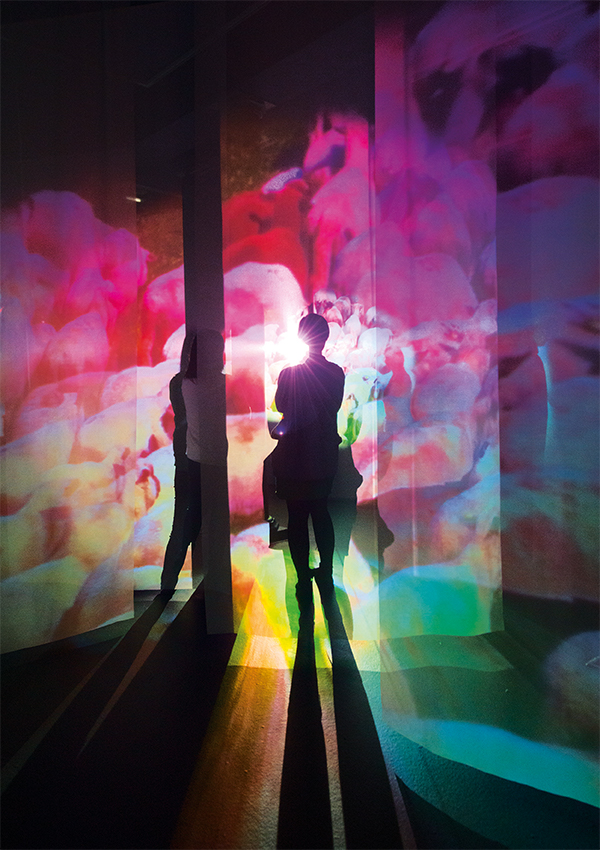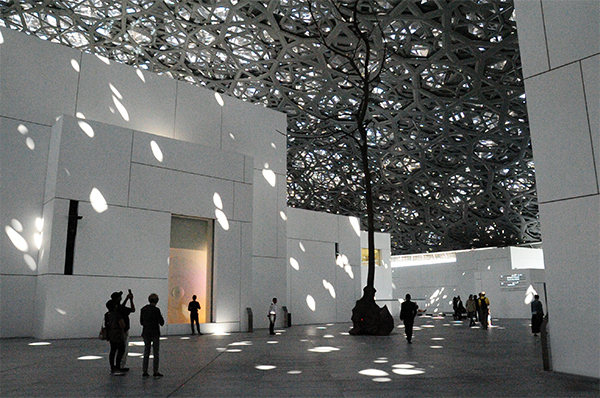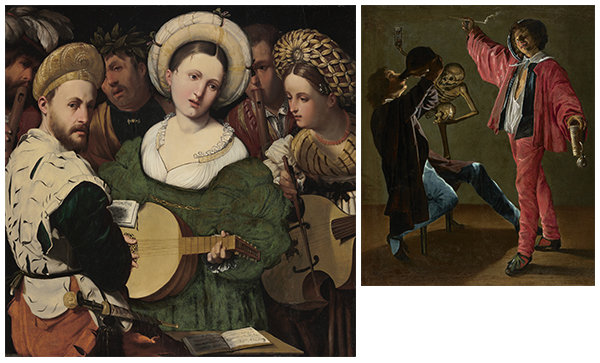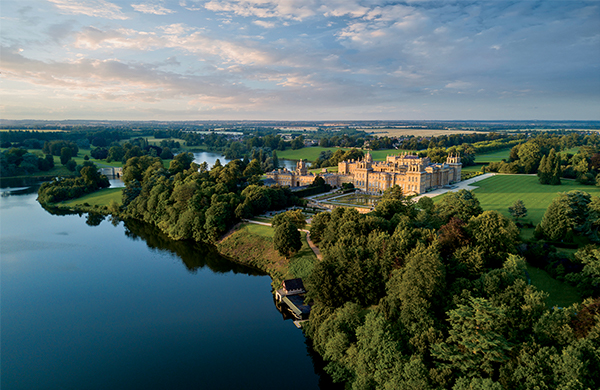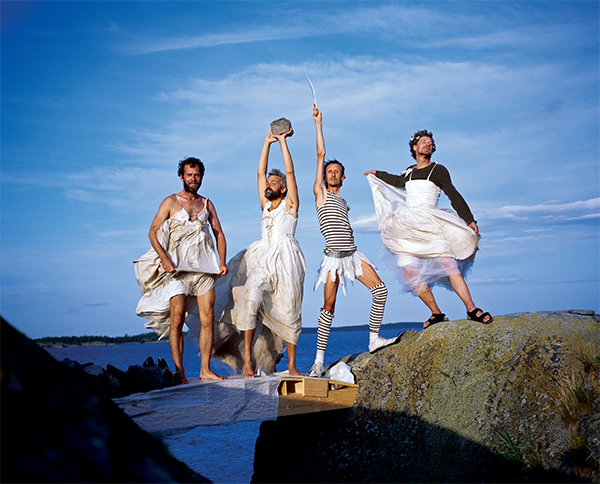Pipilotti Rist Ever Is Over All (still), 1997
Hauser & Wirth and Luhring Augustine © Pipilotti Rist
Pipilotti Rist: Sip my Ocean.
Dive into the Museum of Contemporary Art in Sydney for the most comprehensive exhibition ever staged of one of the world’s foremost video artists, an art form that has truly come of age. Sip My Ocean covers the spectrum of Pililotti Rist’s work, starting with her early video work of the 1980s and culminating in the large-scale immersive installations of today.
Occupying the entire third floor of the Museum, with breakout works in other areas, you are invited to sit on oversized red sofas in Das Zimmer; to walk through a magical forest of hanging lights in Pixelwald Motherboard, and a maze of floating fabric in Administrating Eternity.
Until February 18th at the Museum of Contemporary Art, Australia
www.mca.com.au
Lion Man | Baden-Württemberg, Germany, 40,000 BC
© Museum Ulm | Photo © Oleg Kuchar
Living with Gods – People, places and worlds beyond
This thought-provoking exhibition presents religious beliefs in a novel way not through the doctrines but the objects and symbols that people across time have created for a wide range of devotional, superstitious, cultural and ceremonial reasons. The exhibition takes us on a meditative, sometimes funny and often tragic journey through the existential byways of the human mind: there are shrines and signs, masks and flasks and many a terror, such as the Mexican Devil figure.
The oldest exhibit is Lion Man – a carved figure, half man, half beast, made from the tusk of a woolly mammoth. It is some 40,000 years old and is worn smooth by handling, hence it is assumed to be a devotional object. Lion Man was discovered in an inner cave in 1939 in fragments. Supported by the Genesis Foundation, Living with Gods is part of a collaboration with the BBC and Penguin Books.
Until April 8th at the British Museum, London, UK
www.britishmuseum.org
Louvre Abu Dhabi
The Rain of Light created by the dome designed by Jean Nouvel
First impressions
More than 10 years in the making, and hugely anticipated, the opening of the Louvre Abu Dhabi is a momentous event, a milestone for the cultural enrichment of the Emirates and the first museum in the region to present works spanning the whole of human history from Paleolithic times to the 21st century. While the ‘rain of light’ effect of Jean Nouvel’s 180-metre wide dome, a star patterned ‘parasol’ has seized the headlines, the galleries are the real stars.
The ambition of the Louvre Abu Dhabi to be a ‘universal museum’ is born to an extent from the problems of acquiring art worthy of such an institution when great works are almost impossible to come by (whatever your budget) and some artists are not available at all. The decision taken at the outset to present the works in way that breaks conventions as a cross-cultural series of chapters beginning with The First Villages and moving to A Global Stage is a means of addressing the problem.
Old Masters Now – Celebrating the Johnson Collection
In the wake of the astonishing £450 million auction of Salvator Mundi, now attributed by several – if not all experts – to Leonardo da Vinci, we might suppose that Old Masters’ prices will start to compete with those of contemporary works. Hence the reason why Christie’s entered the Leonardo into a contemporary art auction. So an exhibition of one of the finest collections of European paintings, including many Old Masters, ever formed in the United States is timely. Interestingly authentication – at the heart of the Leonardo story – is one of the key issues dealt with in detail here.
The works were gifted to Philadelphia in 1917 by John Gravel Johnson, a great and wealthy corporate lawyer of the city. The roll call of Renaissance greats is astonishing: works by Botticelli, Bosch and Titian rub shoulders with those of Rembrandt and Hieronymus Bosch while ‘modern’ masters include Manet and Monet. The discovery of a painted over skeleton in Judith Leyster’s painting The Last Drop – removed for aesthetic reasons but now recovered is an example of how modern forensic investigation of paintings recovers extraordinary facts: Johnson, who relied often on his own judgement as an amateur art historian purchased no less than 10 works that he thought were by the hand of Bosch, however examination by experts indicates that only one is unquestionably authentic.
Until February 19th at the Philadelphia Museum of Art, Philadelphia, USA
www.philamuseum.org
Victorian Passions and Pursuits
One of Britain’s most monumental English country houses and the birthplace of Sir Winston Churchill, Blenheim is the only non-royal, non-Episcopal building in England that enjoys the title of palace and is a UNESCO World Heritage Site. It was built to celebrate the Duke of Marlborough’s victory over Louis XIV’s army at Blenheim, on the Danube and is the grandest expression of the short lived English Baroque style. This latest exhibition showcasing examples of Victorian art features works from the era of J.M.W.
Turner and the Pre-Raphaelite Brotherhood through to Richard Dadd and Aubrey Beardsley. Assembled by local collector Cecil Higgins it shows the range of styles that came about in an era encompassing Aesthetes, Pre-Raphaelites, Decadents and Exquisites as well as a collection of botanical watercolours by the 5th Duchess of Marlborough. Several State Rooms have been given a makeover to look as they would have done during Queen Victoria’s reign.
Until April 16th at Blenheim Palace, Woodstock, Oxford, UK
Gelitin, Group portrait
Slight Agitation 3/4: Gelitin
This show highlights the growing investment by luxury brands in contemporary art. Many of the famous names – Gucci, Lagerfield, Agnes B among them – have art foundations to show, curate and catalogue their collections. These bodies are also a valuable source of funding for emerging and established artists and this exhibition by the Thought Council of the Fondazione Prada in Milan is an example.
It is the third of four shows which Prada have given to Gelitin, a group of four Austrian artists who are devoted to the idea of subverting the ideas of totalitarian art and its institutions. Exploring the archetypes of classical architecture, the exhibits play on ideas of the Arc de Triomphe, amphitheatre and obelisk.
Until February 26th at the Fondazione Prada, Milan, Italy
www.fondazioneprada.org
Fairs and More:
Dates for your diary in the New Year
Beyaz Contemporary and Modern Auction
January 15th
Istanbul, Turkey
Contemporary Art Auction
January 19th
Sotheby’s Hong Kong
London Antique Rug & Textile Art Fair
January 23rd – 28th
Battersea Park, London
Master Paintings & Sculpture Auction
January 25th
Sotheby’s New York
Brafa Art Fair
January 27th – February 4th
Avenue du Port, Brussels, Belgium
Art Geneve
February 1st – 4th
Palexpo, Geneva, Switzerland
Artefiera
February 2nd – 5th
Exhibition Centre, Bologna, Italy
Art Rotterdam
February 8th – 11th February
World Trade Centre, Rotterdam, Netherlands
India Art Fair
February 9th – 12th
New Delhi, India
ARCO Madrid and Art Madrid
February 21st – 25th
Madrid, Spain

